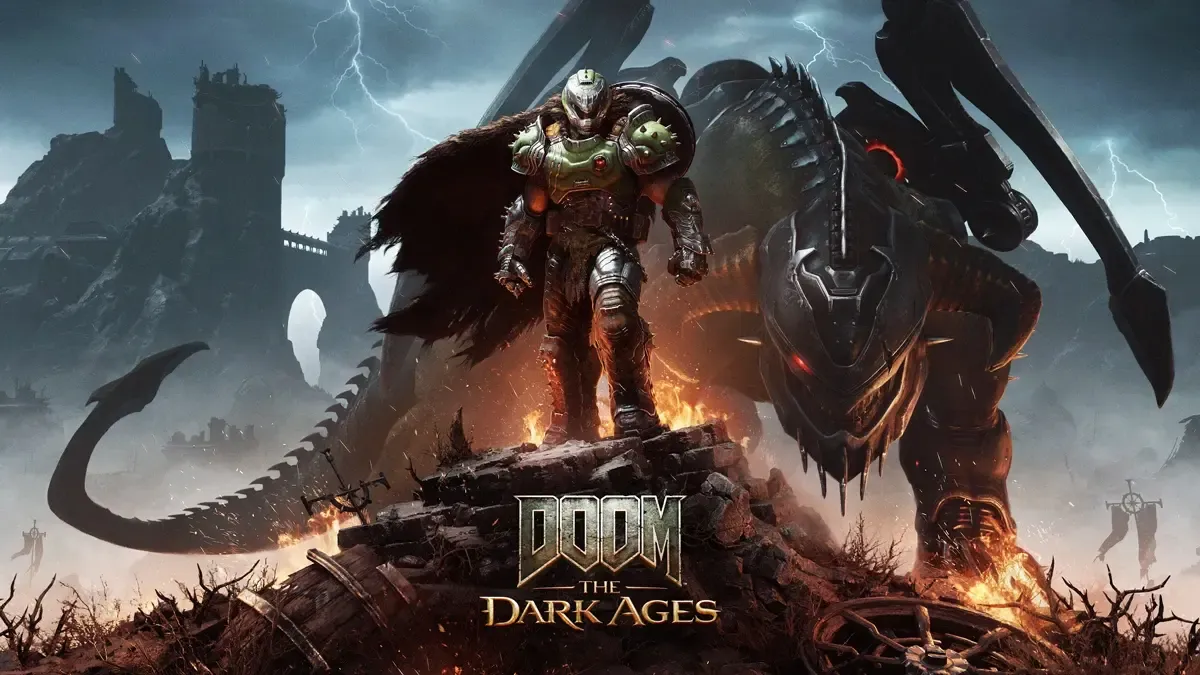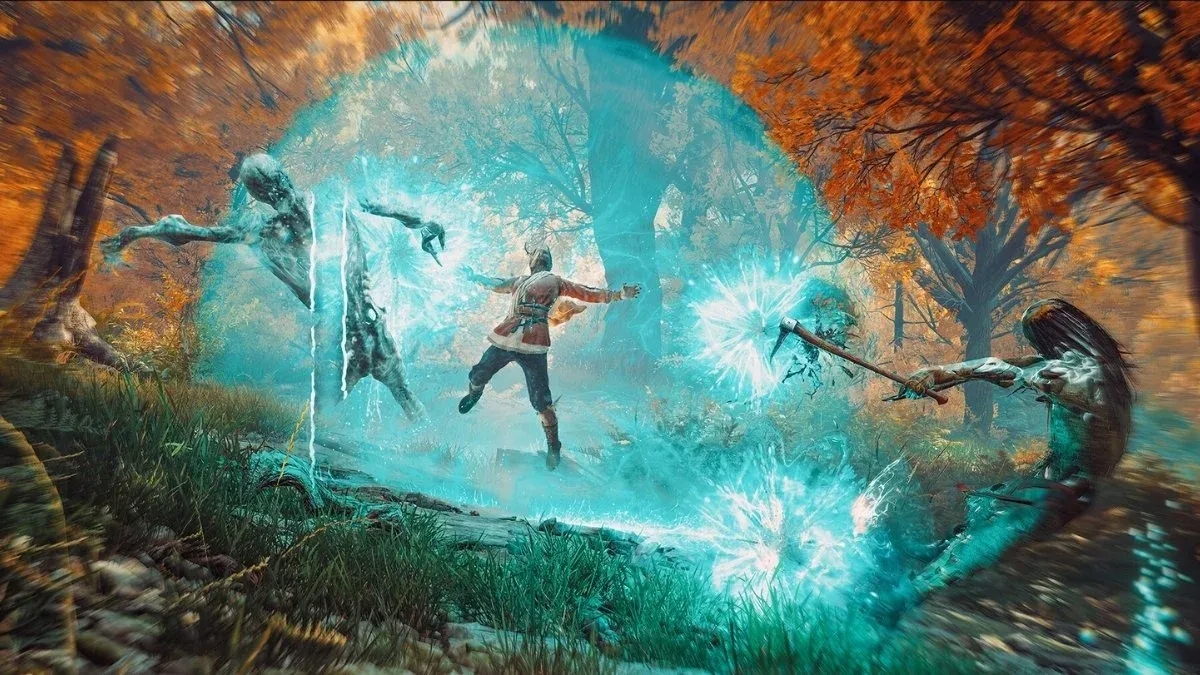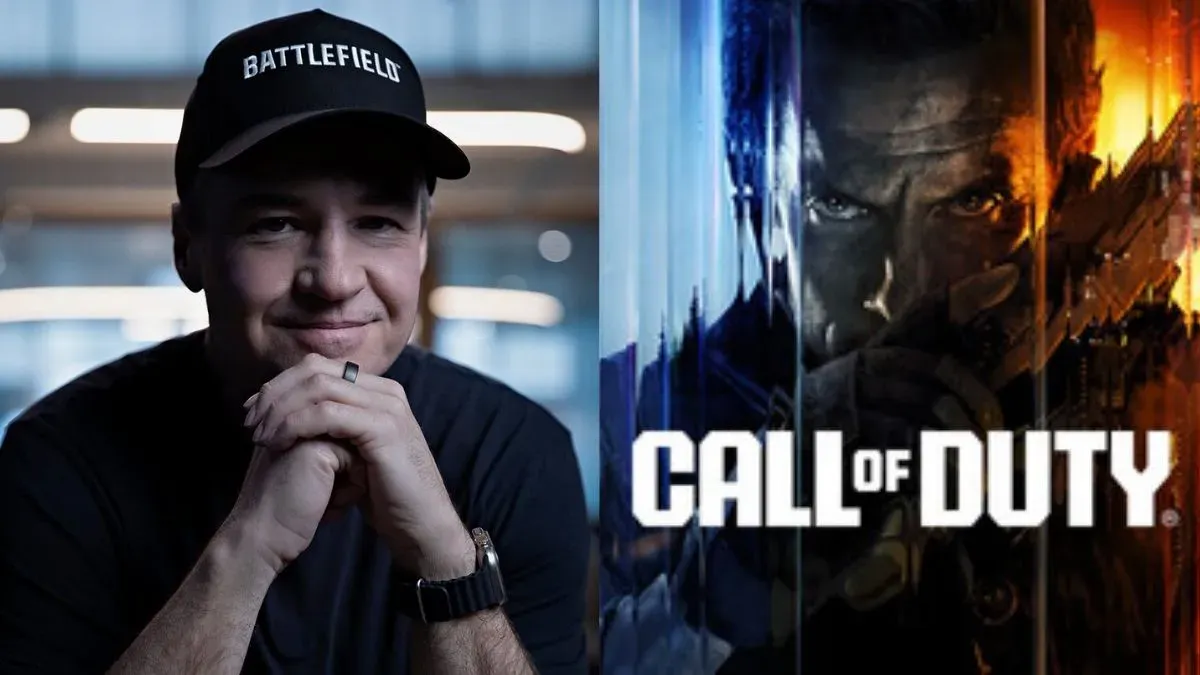Doom: The Dark Ages is one of the franchise’s more flawed entries, but it feels fantastic to play all the same.
After the Doom Slayer quite literally killed the creator of all things in Doom Eternal: The Ancient Gods and thus ended Hell’s multiversal demonic invasion for good, it looked like the franchise had finally arrived at its fitting end. Id Software seems to agree as well, seeing as its next big Doom game doesn’t move the story forward by an inch. Instead, it turns back time to dive into a crucial but unexplored slice of the Slayer’s bloody history.
Doom: The Dark Ages takes place a very long time before Doom (2016), which saw the Slayer imprisoned in a sarcophagus in Mars. Here, the Slayer fights in the dimension of Argent D’Nur against hordes of demons, while under the control of the angelic Maykrs. However, those who are accustomed to the Slayer’s bloody deeds will know that any attempt to contain him is transient at best. It doesn’t take too long for players to be handed control to an unchained and vengeful Slayer, doing what he does best: ripping and tearing, until it is done.
Id Software’s latest installment to the Doom franchise is breathtakingly epic and immense fun to play, but it also sees the developer finally bite off more than it can chew.
Doom: The Dark Ages' campaign is a winner when it sticks to the point
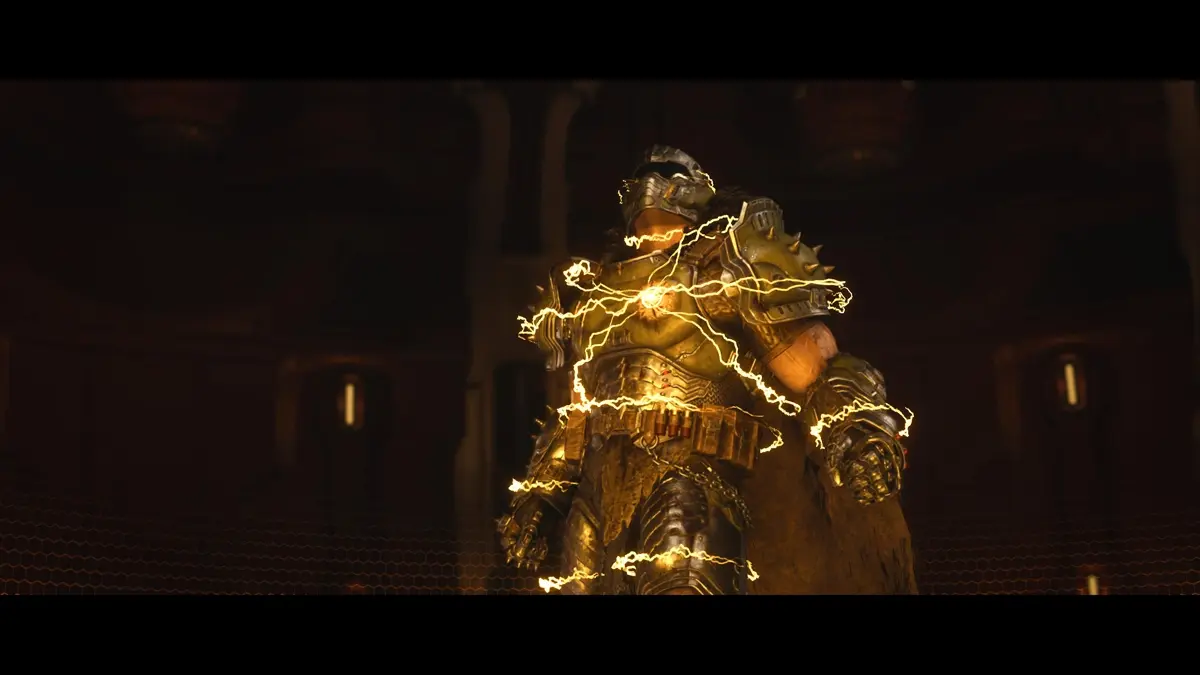
For those who are somewhat lost on where this game takes place in the Doom timeline, let me break it down for you as simply as I can: after the Doom Slayer decided to stay in Hell to kill all the demons he could find (Doom 64), he went a tad insane. He was later found by the residents of a techno-medieval dimension called Argent D’Nur, which has come under siege by Hell itself. The Argents brought him over to their gods, an alien race called the Maykrs. He was then infused with godly power boosted by his own undying rage, and thus became a superpowered marine. A… Space Marine, if you will.
Thus, we enter the setting of Doom: The Dark Ages. The Slayer has been mind-controlled into servitude to the Maykrs, and fights as a nuclear-level weapon of destruction for the people of Argent D’Nur, only to be deployed as a last resort. A Prince of Hell has emerged to make his presence on the battlefield necessary, and so the Slayer goes to work and does what he does best: rip and tear, until it is done.
The Dark Ages sees id Software flex its storytelling capabilities, following the relatively lean and gameplay-focused Doom (2016) and Doom Eternal. A much longer campaign gives the developer more runway to flesh out the world and characters of Argent D’Nur, via bigger and harder-hitting cinematics that drive home this game’s Warhammer 40K-like fantasy aesthetic. Still, the spirit of lean-and-mean Doom games lingers on; although we see more human-like characters (the Argents are, in fact, precursors to the human race) than before, they can hardly be described as the Slayer’s companions.
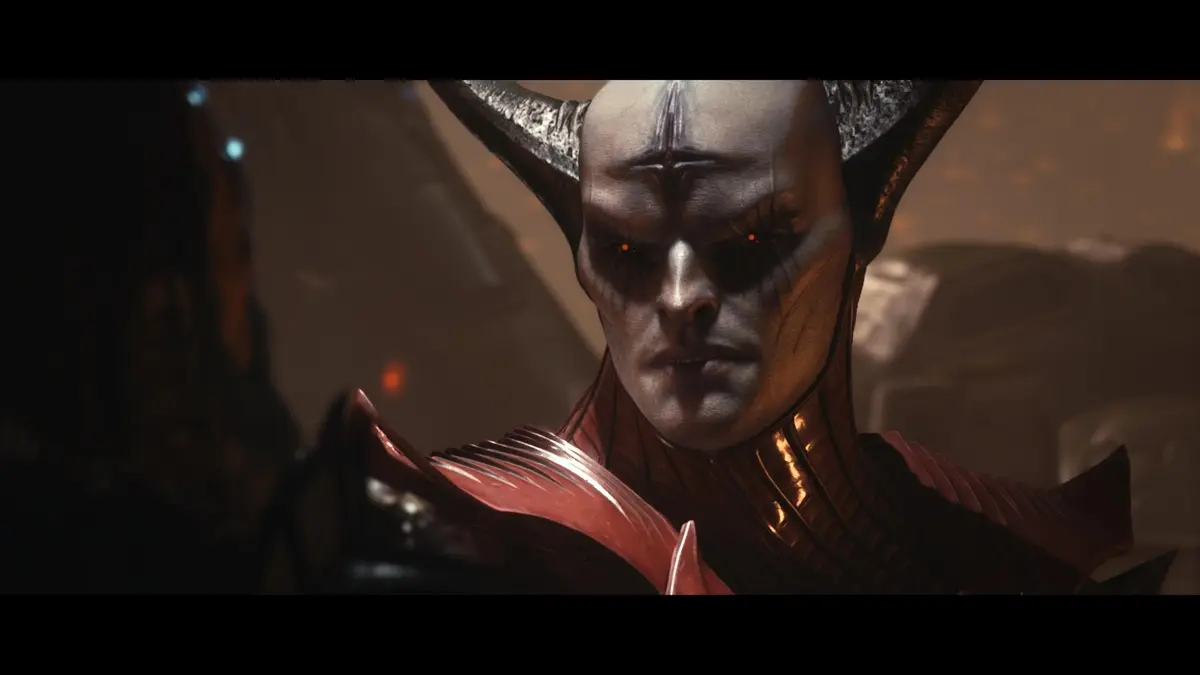
These cinematics typically serve to show us the scale of the war being waged across Argent D’Nur, but its most crucial events are delivered through gameplay. Thus, the Slayer’s patented badassery is never put into question–mind control, or no. He still blasts and punches his way through the scheming villains before him, and once he gets going, id is wise enough to keep cutscenes from bogging this power fantasy down.
Personally, I enjoy the lore of this universe. I wished that Doom Eternal had done more show and less tell with its storytelling, but instead, the details of its environments and characters were trapped within extensive pages of lore. Doom: The Dark Ages does much less of that (if anything, its Codex is disappointingly meagre by comparison), but in turn doesn’t have a whole lot to add to this universe. Its main villain is unremarkable at best, and underwhelming at worst, and its protagonists are shallow puddles of missed opportunity.
Those who have not kept up with the series thus far might find themselves hopelessly lost thanks to the game’s complete refusal to explain itself at every turn. Characters appear prominently and thus seem crucial to the plot early on, and proceed to vanish for the next 10 levels. The story moves at a breakneck pace for the first half of the game, only to slow down rather dramatically in the second half. Its last three levels are nothing short of breathtaking, however, with id combining all of the game's gameplay pillars–mechs, dragons, and big fights–into an exhilarating final burst of all-out war.
This campaign is an inconsistent experience, one that far outshines Doom (2016) in sheer spectacle, but nonetheless falls just short of the highs of Doom Eternal. However, composer Finishing Move has done a marvellous job emulating the heavy metal riffs and bashing drums that perfectly exemplify the angry, teeth-gnashing music of the Doom franchise. While this soundtrack doesn’t hit the highs of Mick Gordon’s timeless work on Doom (2016) and Doom Eternal, it doesn’t disappoint either.
Dragon-riding is not as fun as mech-fighting
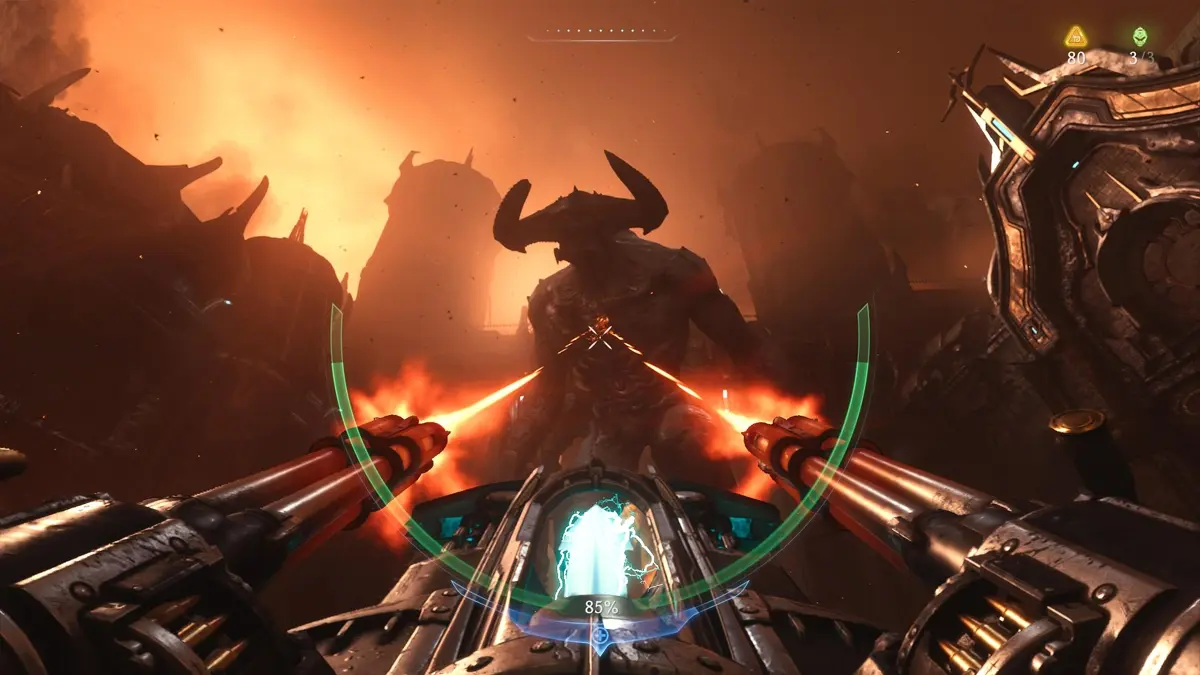
Doom: The Dark Ages finally sees id Software try its hands at a feature it stopped just short of adding to Doom Eternal’s The Ancient Gods expansions: mech combat. The Doom Slayer has a variety of tools at his disposal in The Dark Ages, where he finds himself equipped with both Argent and Maykr-made technology. One of these is a massive Atlan mech, which players pilot to engage in melee combat with various demonic Titans across multiple campaign levels.
These levels are short, but the Pacific Rim-like power fantasy they provide is addictive, mixing in Brobdingnagian guns and rocket-powered fists to make for loud and weighty combat. It feels like a natural extension of the Slayer’s on-ground capabilities, with simplistic melee combat that doesn’t overstay its welcome, and thus never gets old.
The same cannot be said for the game’s dragon levels, which have the Slayer pilot his cybernetic dragon Serrat through wide-open skyboxes and engage in combat with flying Hell ships. Flying on the dragon is simple to get a hang of, but it just isn’t fun to do for long periods of time. Combat either involves chasing down frustratingly tanky ships in frustratingly repetitive dogfights, or locking on to enemies and executing perfect dodges to charge up your weapons.
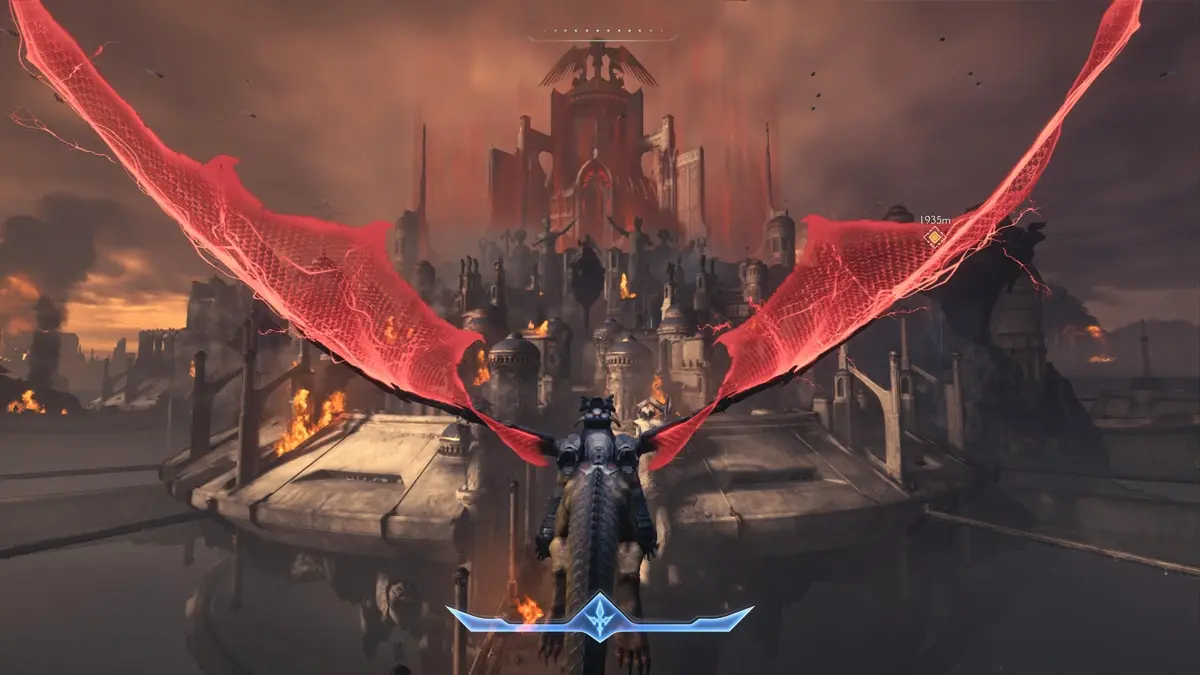
These levels typically have the Slayer shoot down Hell ships with the dragon before destroying them on foot, with the player tasked to repeat these tasks ad nauseam in recycled environments. In a game rife with big ideas and new mechanics, these dragon levels are bafflingly half-baked, and thus stick out like a sore thumb. Never mind the fact that the game’s Auto Map is nigh-impossible to navigate in these levels, leaving completionists searching far and wide for secrets that can very easily be missed amongst chaotically laid-out environments.
I played Doom: The Dark Ages on the PlayStation 5, and can confirm that id Software has once again come through with a gorgeous and nigh-technically flawless console port. The only issue I ran into was a game crash during a key fight in the second half of the game, though it only happened once. The game’s detailed environments, demonic hordes, and busy skyboxes don’t make a noticeable dent in performance throughout.
Ripping and tearing
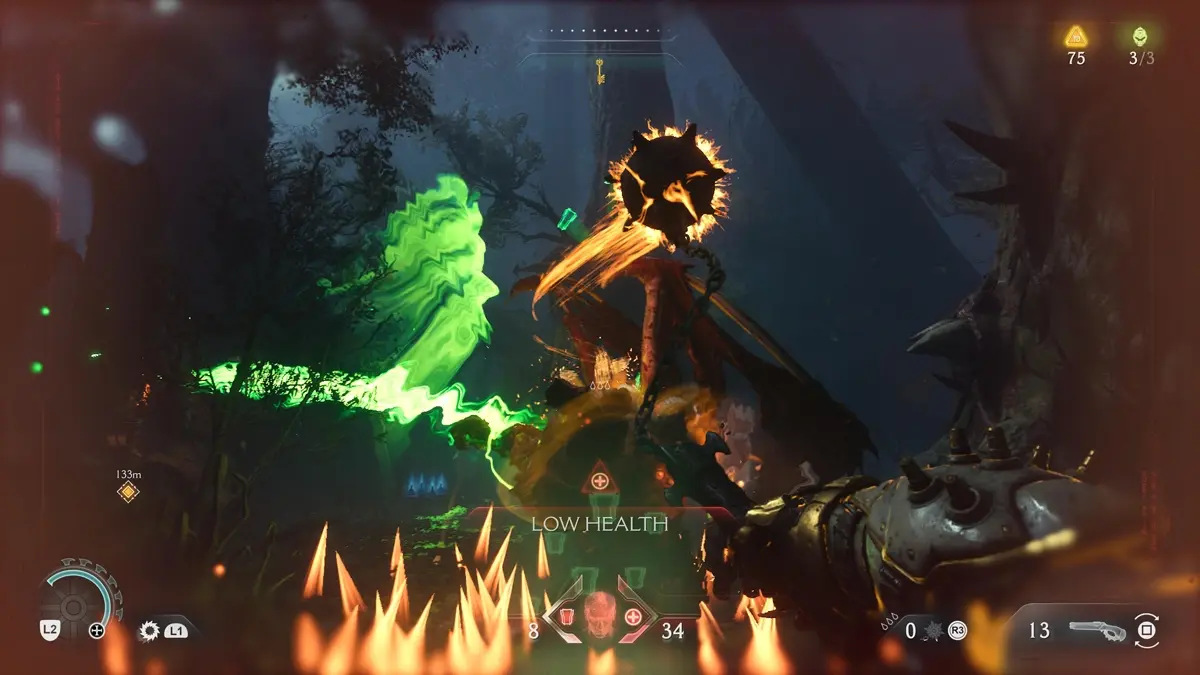
Doom: The Dark Ages’ combat can best be described as a mish-mash of Doom Eternal and classic Doom (1993). With larger and more open battlefields in which to fight enemies, the Doom Slayer is given more freedom to roam around and dismantle armies of demons piece-by-piece, rather than prioritise specific demons to rotate through resource pickups like in Doom Eternal.
Combat also incorporates bullet hell mechanics and a parry system, with the Slayer now having to parry the odd enemy attack with his Shield. With timing and positioning now more important than ever, the pace of gameplay evolves depending on who’s on the field. If the Slayer is dealing with smaller grunt enemies, he can take them all out at a distance with little issue. However, a Cyberdemon will require a different approach–one wherein the Slayer has to fight a one-on-one duel with the demon personally, parrying and attacking until the demon is down, before moving on to the next one.
The Slayer also has a new range of weapons to use in The Dark Ages. The tried-and-true Doom weapons have returned, like the Rocket Launcher and the Heavy Assault Rifle, though they have been redesigned to fit the game’s Gothic medieval aesthetic. Thankfully, a few old weapons–like the Pistol–have been traded in for vastly superior new weapons, like the demon skull-churning Skullcrusher, even if it takes after the Unmaykr in some aspects.
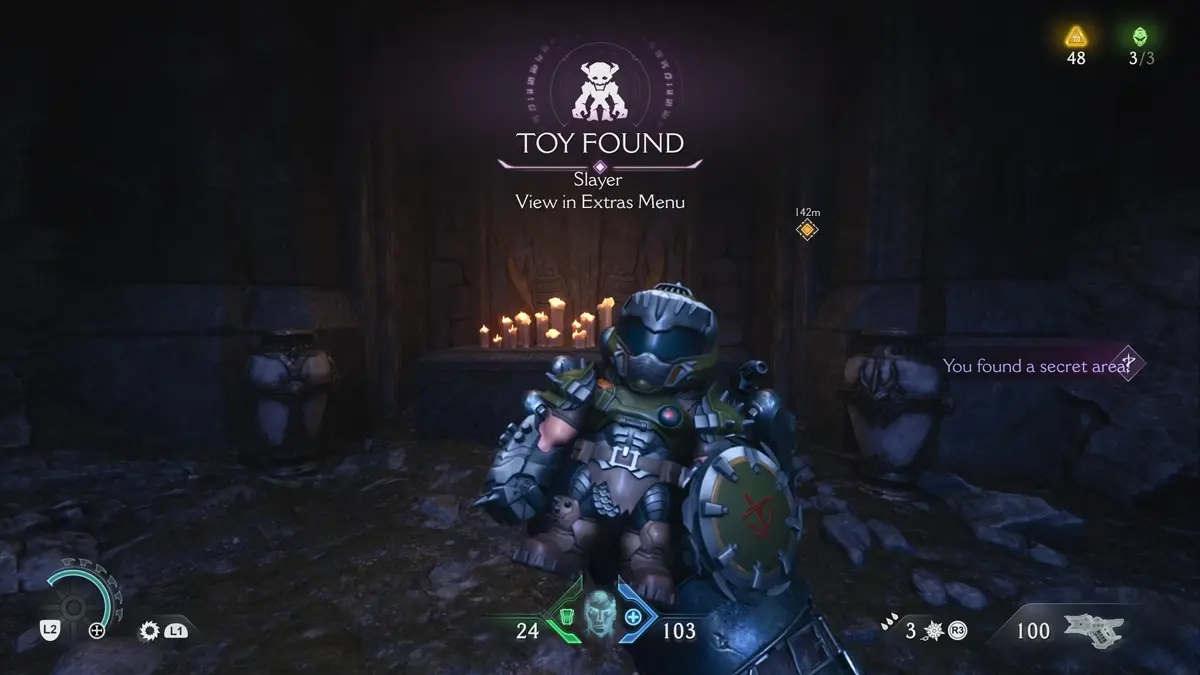
These weapons now fit into specific classes, with two weapons per class. Functionally, swapping between each weapon is no different than swapping weapon mods in Doom Eternal. They may look different, but they ultimately pump out the same bullets–just in different ways. Given that The Dark Ages puts less emphasis on all of its weapons being used in a strict and set order, one might find themselves actively ignoring certain weapons unless they’re caught in certain scenarios.
While the outright superiority of certain weapons might leave others feeling like wasted weapon slots, it’s the freedom with which players can use any of these weapons to wipe demons out that the game is trying to achieve. Combat encounters in Doom Eternal felt like a combat puzzle, with players having to figure out which weapons to use and when. In Doom: The Dark Ages, they can rest easy knowing that it doesn’t really matter. Some of them will just get the job done a lot quicker.
A more flexible Doom game
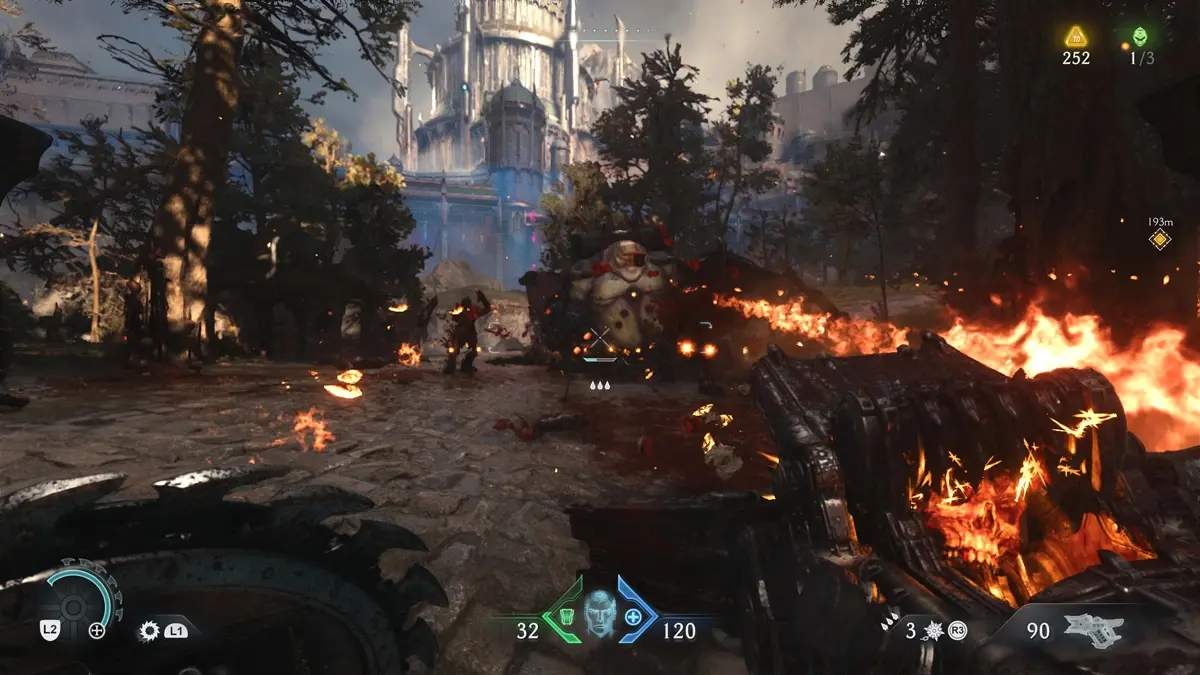
While I did adore the combat puzzles of Doom Eternal thoroughly, it would have been a big ask to put players through that wringer a second time. The Dark Ages makes the correct choice in following up a linear Doom game by giving players more flexibility. Its larger levels are just as demanding as Doom Eternal’s tighter levels, but in a very different way. These environments are gorgeous enough to entice player exploration on their own, and players are encouraged to dive into all of their nooks and crannies to find secrets; these are either collectibles or upgrade resources.
However, these expansive levels can lose their shine when thoroughly canvassed for secrets, especially when most of them can hardly be considered optional. Rubies and Wraithstones provide key upgrades to strengthen the Slayer, even if players would pass on lore entries for the Codex and adorable toys modelled after The Dark Ages’ demons. I will say that I missed Doom Eternal’s Fortress of Doom hub for this reason. It felt a lot more rewarding to pick up these collectibles when I actually had somewhere to store them.
There is something lost in this addition of open-world elements to Doom; mainly, a sense of focus in its main objectives, which should keep the player constantly engaged from Point A to Point B of a level. With so many meandering detours and repetitive objectives, the campaign itself often loses sight of its main plot. If the game can’t stick to the point, the player can hardly be expected to keep up with its sometimes heightened, sometimes stagnant stakes. Ultimately, that’s the tradeoff all video games must make when shifting to open-world gameplay.
Verdict

Doom: The Dark Ages is a phenomenal shooter and a pretty decent adventure game, even if the two genres don’t quite coalesce in its gameplay loop. Its combat is as crunchy and satisfying as a Doom game should be, arming players with plentiful options to take demons down with the speed and ferocity of the Doom Slayer himself. Id Software is still the most interesting first-person shooter-maker around, constantly finding new ways to push its tried-and-tested Doom formula forward.
However, the game’s campaign is a noticeably messier experience than Doom Eternal. Dragon levels wear out their welcome very quickly, and its story is front-loaded with interesting and meaningful developments before it rapidly loses steam. The game’s main saving grace is that it ends with a massive bang, and even when the Slayer is aimlessly wandering a wide-open map looking for collectible toys, it’s still too much fun falling into combat and ripping your way back out of it with a Shield Saw.
Doom: The Dark Ages launches on 15 May, 2025, on PlayStation 5, PC, and Xbox Series X|S. We received a copy of the game for this review.

